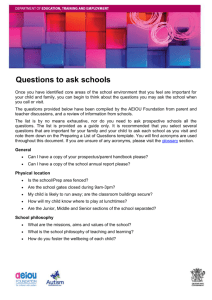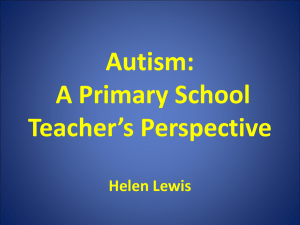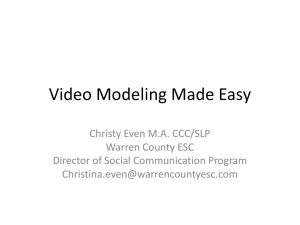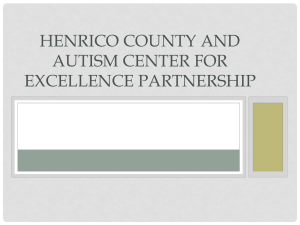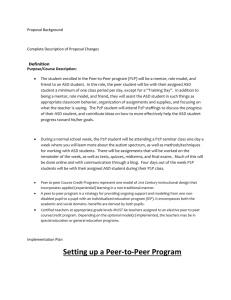Learning Style Profile: Are We Interference? Dr. Patrick J. Rydell In
advertisement
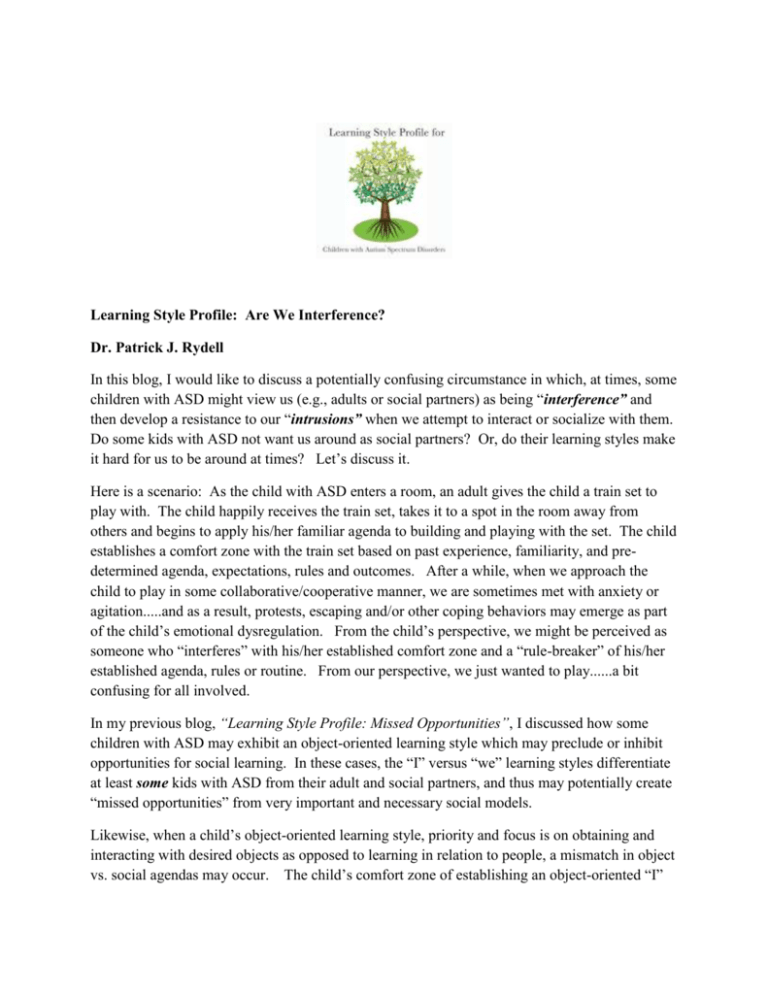
Learning Style Profile: Are We Interference? Dr. Patrick J. Rydell In this blog, I would like to discuss a potentially confusing circumstance in which, at times, some children with ASD might view us (e.g., adults or social partners) as being “interference” and then develop a resistance to our “intrusions” when we attempt to interact or socialize with them. Do some kids with ASD not want us around as social partners? Or, do their learning styles make it hard for us to be around at times? Let’s discuss it. Here is a scenario: As the child with ASD enters a room, an adult gives the child a train set to play with. The child happily receives the train set, takes it to a spot in the room away from others and begins to apply his/her familiar agenda to building and playing with the set. The child establishes a comfort zone with the train set based on past experience, familiarity, and predetermined agenda, expectations, rules and outcomes. After a while, when we approach the child to play in some collaborative/cooperative manner, we are sometimes met with anxiety or agitation.....and as a result, protests, escaping and/or other coping behaviors may emerge as part of the child’s emotional dysregulation. From the child’s perspective, we might be perceived as someone who “interferes” with his/her established comfort zone and a “rule-breaker” of his/her established agenda, rules or routine. From our perspective, we just wanted to play......a bit confusing for all involved. In my previous blog, “Learning Style Profile: Missed Opportunities”, I discussed how some children with ASD may exhibit an object-oriented learning style which may preclude or inhibit opportunities for social learning. In these cases, the “I” versus “we” learning styles differentiate at least some kids with ASD from their adult and social partners, and thus may potentially create “missed opportunities” from very important and necessary social models. Likewise, when a child’s object-oriented learning style, priority and focus is on obtaining and interacting with desired objects as opposed to learning in relation to people, a mismatch in object vs. social agendas may occur. The child’s comfort zone of establishing an object-oriented “I” agenda may collide with a more social “we” agenda that is typically the focus of ours, as social partners. Again, this “interference factor” may be common for some children with ASD, but not all. We cannot automatically assume that the child does not want us around....this is unfair. Instead, we might ask how the child’s learning style and our social interaction strategies do or do not match up. So, here is where our work is cut out for us: I previously discussed how to conceptualize, organize and begin therapy sessions with children on the spectrum in order to facilitate a child from primarily being an “object-oriented learner” to more of a “people-oriented learner”. I will expand on these ideas in order for us to assist our kids in becoming more emotionally regulated and less resistant when approached by others for learning, play and social interaction. Therapy Ideas from (adapted from Blog #3 - Learning Style Profile: Missed Opportunities) 1. Prior to beginning the activity (i.e., joint action routine) we hold a brief discussion with the adult or peer partners to establish a “people-oriented” learning style and approach. In other words, we describe the social learning process of the upcoming joint action routine. We are facilitating a social agenda from the very start by asking all participants to: a) “Stop....wait....look up and around”, and consider b) “What are we doing?, and c) “How can you become part of what we are doing?” 2. When a child enters the room or learning environment, we will: a) Establish a social priority from the outset.....in other words, we (social partners) strive to become the most important thing in the environment to the child with ASD, not the object. b) We do not present the child with an object of interest right away nor have the objects immediately accessible. Objects/tasks are rarely given to the child without a “we” social agenda or social model being established first. The objects are presented in relation to the social partners, in other words, “we come with it”. We wish to reduce the “interference factor” that results from 1) the child being given an object right away, 2) the child primarily focusing on an object as per his/her object-oriented learning style, then 3) being asked to stop and share the established agenda with us (social partners) once his/her agenda has already begun. This is very hard for some children to do and causes various degrees of emotional dysregulation and subsequent challenges to social interaction. c) The child’s interactions with objects first require social awareness, attention, orientation and monitoring of the collective “we” agenda so that the child does not automatically devolve into a previously established, solitary and object-oriented routine. d) Objects of interest are presented as part of the social “we” agenda by asking the child to “look up and around....how can you become part of what we are doing?” as the social partner(s) model a cooperative/collaborative joint action routine with each other, then systematically inviting the child to partially or fully join in and participate based on the modeled/mentored social and contextual cues presented by the social partners. e) The child’s comfort zone expands to include “people-oriented learning” by interacting with new and different objects in relation to his/her social partners as a standard teaching practice that is driven by a basic core challenge and defining characteristic of ASD – Social deficit. 3. By prioritizing a learning style of “looking up and around” as our first step in any sociallyoriented intervention, we facilitate the child’s : a) Learning about objects in relation to people b) Learning how and when to participate in a social agenda established by others c) Learning “how and when” to use/interact with objects based on social/contextual cues d) Learning “new and different” ways of interacting with objects, and most importantly, e) Reducing the “interference factor” that may be unfairly misinterpreted as asocial behavior Reference: Learning Style Profile for Children with Autism Spectrum Disorders (Rydell, 2012) http://www.rockymountainautismcenter.com/lsp/ Contact: Dr. Patrick J. Rydell, Director Rocky Mountain Autism Center www.rockymountainautismcenter.com

